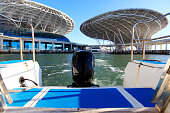Fishing is a skill that requires patience and persistence. Whether you are a seasoned angler or a newcomer to the sport, learning how to fish in tricky conditions is necessary for developing expertise and staying motivated. In this article, we will explore the art of fishing in challenging situations and provide tips and techniques to help you master the art of fishing.
One of the most daunting conditions for anglers is dense vegetation and tangled lines. Water levels may rise, reducing visibility and making it difficult to navigate the waterway. However, this can also be a chance for growth. During periods of heavy rainfall, fish often become more active and feed aggressively due to the abundance of food present in the water. The key to successful fishing in these conditions is to look for areas with rushing streams, where fish are more likely to congregate.
Wind is another common challenge faced by anglers, particularly those fishing in open waters like lakes and rivers. Strong gusts can make it difficult to cast a line, and the choppy water can make it hard to judge the distance and depth of your lure or bait. To combat these conditions, anglers can use techniques such as fishing with a steady hand. Another option is to use heavier tackle, party Boat docklands which can withstand the force of the wind.
Cold weather can also be a formidable foe for anglers, particularly those fishing in areas with cold water temperatures. Fish may be less active in cold water, making it harder to catch them. However, some fish species, such as salmon and tuna, are more active in colder water than others. In these conditions, anglers can use techniques such as deliberate movement, where they allow the lure or bait to settle on the bottom of the water before lifting it up. This can help to slow down the presentation and give the fish a better opportunity to detect the bait.
Night fishing can be another complex scenario for anglers, particularly those using lures or bait that are hard to see in the dark. However, many species of fish are more active at night, feeding on plankton and algae that are more abundant in the evening. To succeed in night fishing, anglers can use techniques such as baits with reflective surfaces. Another option is to use insect imitations that mimic movement.

Finally, fishing in areas with complex habitat can be a significant challenge for anglers, particularly those using lures or bait that are hard to control in the structure. However, many species of fish are found in these areas, where they seek shelter and food. To succeed in fishing these conditions, anglers can use techniques such as finesse fishing, where they use delicate gear, to avoid snagging. Another option is to use adapted equipment, such as equipment specifically designed for fishing in thick vegetation.
In conclusion, fishing in tricky conditions requires a mix of technique. By understanding the various challenges and difficulties, anglers can develop the competence and proficiency needed to catch fish consistently. Whether you are a experienced angler, or a new fisherman, learning the art of fishing in tricky conditions will give you a competitive edge.
